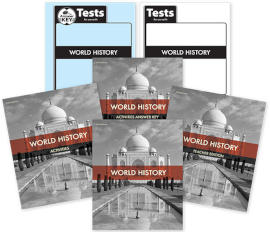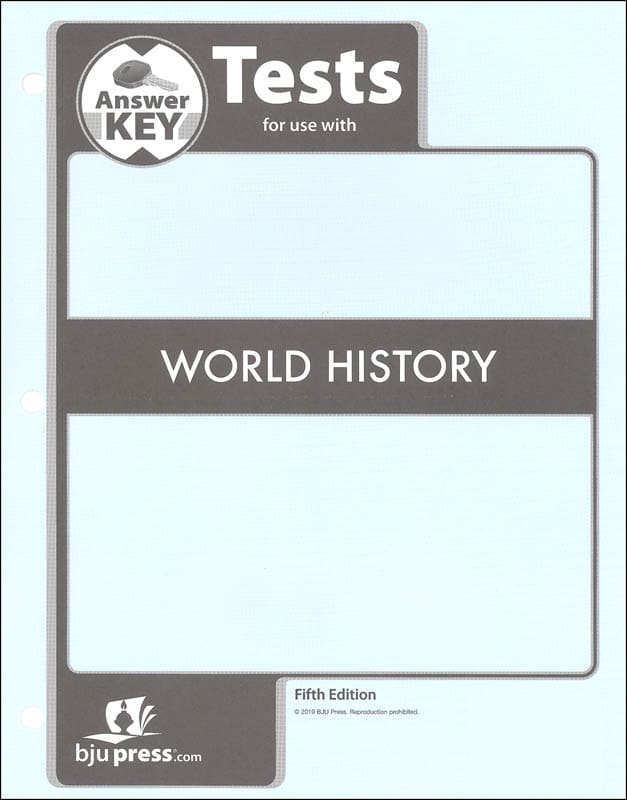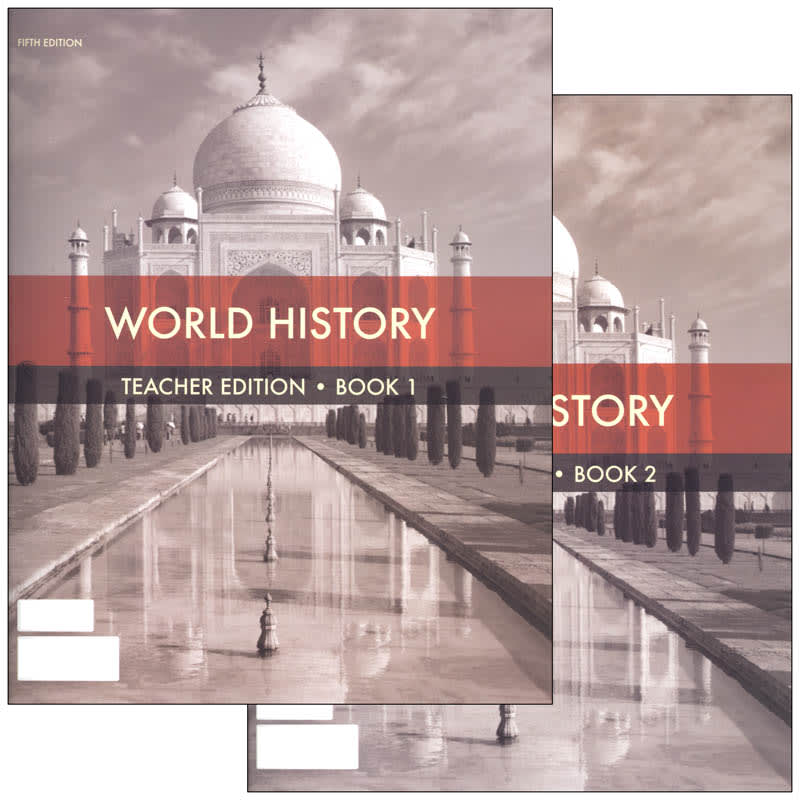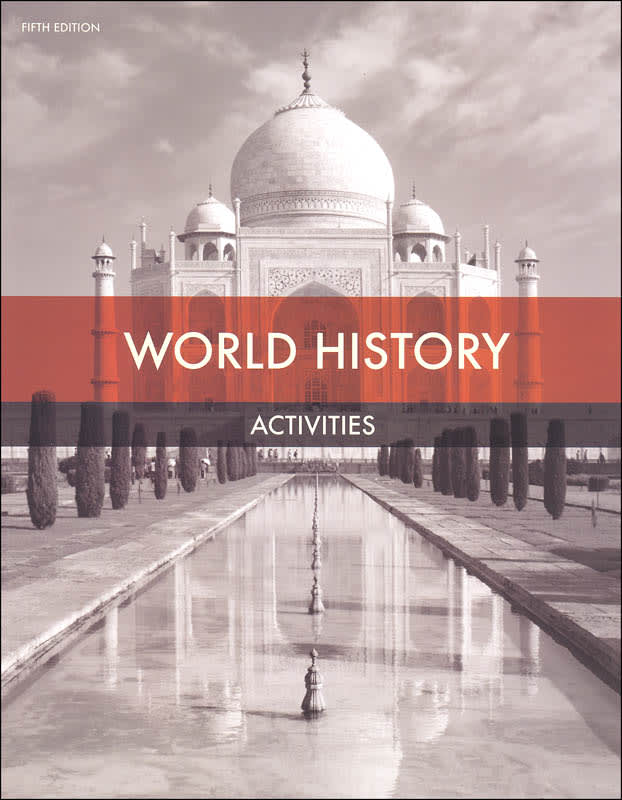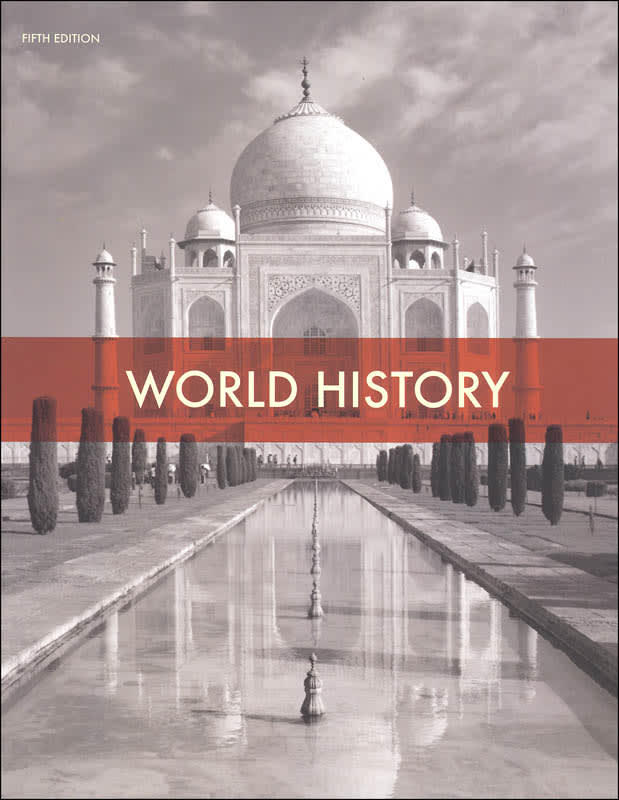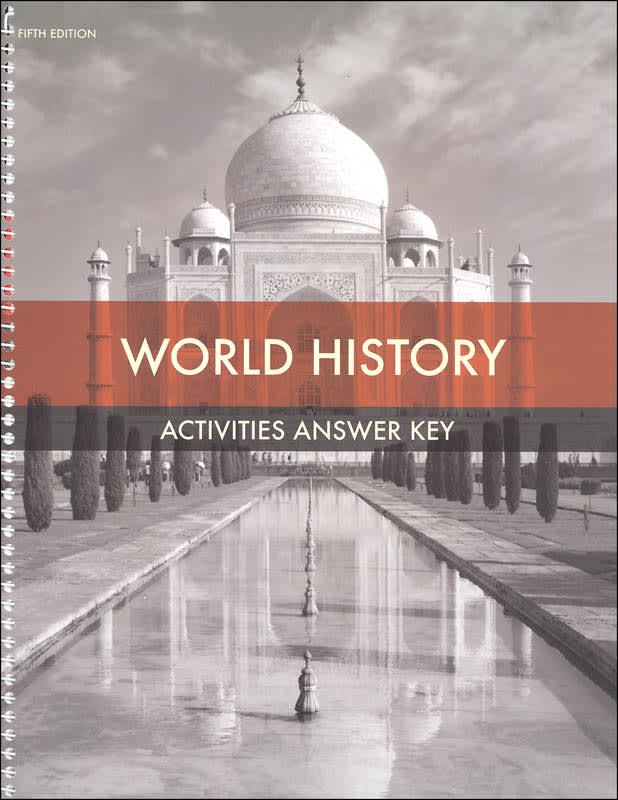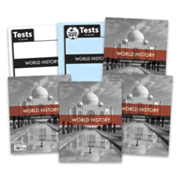Suggested for tenth grade, BJU Press’s World History, fifth edition covers the entire span of history from Creation to the present from a perspective that is both Christian and patriotic.
The course consists of a textbook, a two-volume teacher edition, a student activities book, a set of tests, and answer keys for the tests and the activities book. An eTextbook version of the student textbook is also available (“rented” for a 16-month period), which includes a read-aloud feature that might be valuable for some students.
The first chapter begins with discussions about how historians work and how worldviews influence the interpretation of history. That same chapter continues with a biblically based presentation on creation and history up through the scattering of peoples after the tower of Babel. The second chapter covers the history of peoples in the Fertile Crescent, Egypt, Near Eastern empires, and ancient India and China, including brief discussions of religions such as Hinduism and Buddhism.
The rest of the course covers developments through history and around the world in politics, economics, geography, and the arts, addressing some sociological facets of history from a biblical Christian worldview. This is especially noticeable in some chapters, such as Chapter 21: Discontent & Experimentation, when it discusses twentieth-century developments in philosophy, science, and the arts.
As it moves into modern history, the textbook reveals a politically conservative outlook. For example, it presents a strongly negative view of Communism, and it views the New Deal critically, stating that Franklin Roosevelt’s policies “increased government involvement in economic and social matters without resolving the core economic problems” (p. 467).
The final chapter, significantly expanded from the last edition, brings the reader up through 2019, including the unpredictable status of situations such as China’s expansion policy.
It is important to note that the Protestant outlook of this textbook is so strong that those from other Christian faith traditions (e.g., Catholic and Orthodox), will probably not want to use it.
The student text features full-color illustrations. Lessons are presented in seven units, with each unit divided into chapters, and each chapter further divided into sections. Guiding questions at the beginning of each section help focus student attention on the most important ideas, and important terms are in bold type. Section quizzes within chapters again highlight key points to remember. At the end of each chapter are vocabulary terms, factual recall questions, and thought-provoking questions. Answers for section and chapter questions are in the teacher’s edition, although some questions have only suggested answers.
The questions often relate biblical principles to history and raise worldview issues. For example, one question states: “Arius taught that Christ did not always exist but that He was created by God the Father. Using John 1:1-4 and Colossians 2:8-9, refute this heresy” (p. 91). Some questions draw on a biblical worldview without reference to Bible verses. For example, on page 199, one question asks: “Imagine that you are a Christian king in medieval Europe. Write a list of laws concerning the practice of religion in your nation.” Questions like these cause students to think through issues related to both religion and political philosophy at a deep level. The teacher’s edition has some commentary on questions like these but expects that student responses will vary. Personally, I consider the questions to be one of the most outstanding features of this course.
The teacher’s edition has reduced images of the student pages surrounded by teaching notes and answers. The teacher’s edition explains when to use the student activities manual and raises topics for discussion. It also suggests optional reading, videos, and projects. Homeschoolers might rely more on the free Homeschool Hub rather than the teacher’s edition for lesson plans, although you still need the physical teacher’s edition for checking answers. The online Hub has simplified lesson plans for homeschoolers, a customizable planner, a grade book, maps, and web links.
The student activity manual contains readings, map activities, charts to complete, and questions for each chapter. You will need the separate answer key for the student activity manual.
Summary
BJU Press’s World History course does an outstanding job of teaching the facts of history while simultaneously raising thought-provoking worldview questions. For those who share its Protestant viewpoint, this is one of the best options for covering world history.




